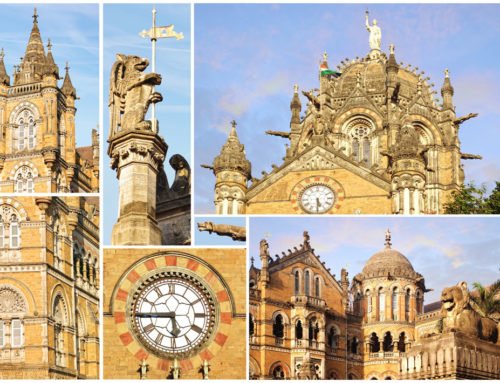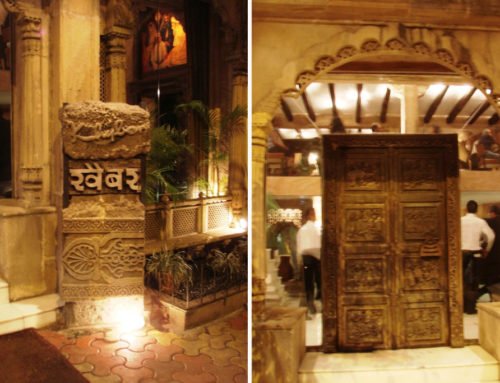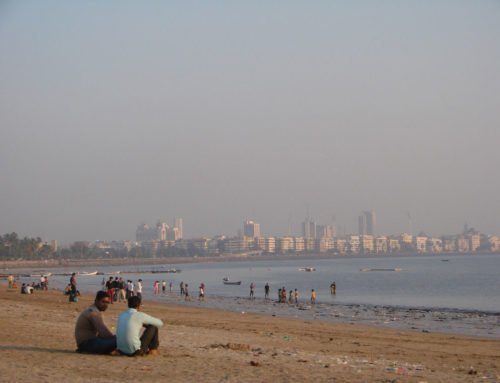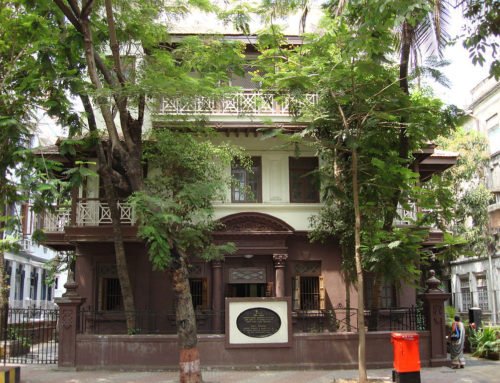Overview
- Features: One of Mumbai’s biggest and best museums
- Opening Times: 10:45 am to 6:00 pm (Tue-Sun)
- Best Time to Visit: Anytime
- Duration: 2 to 3 hours
- Travelled By: Auto rickshaw
- Cost: Indian/foreigner Rs 25/300, camera Rs 200
- Address: K Dubash Marg, Mumbai, Maharashtra, India
- Type: Museum
Author Reviews[display_rating_item_results rating_form_id=”2″ rating_entry_ids=”1″ show_category_filter=”false” show_options=”true” result_type=”star_rating” preserve_max_rating=”true” show_title=”false” show_count=”false” ]
Total Rating: [display_rating_result rating_form_id=”2″ show_count=”false” show_rich_snippets=true] [accordions load=”1″] [accordion title=”User Reviews” last] [display_rating_item_results rating_form_id=”5″ show_options=”true” result_type=”star_rating” preserve_max_rating=”true” show_title=”false” show_count=”true” show_rich_snippets=true] [/accordion] [accordion title=”Add Review”][display_rating_form show_email_input=”true” show_comment_textarea=”true” show_name_input=”true” rating_form_id=”5″] [/accordion] [/accordions]
Summary
Prince of Wales Museum, now known as Chhatrapati Shivaji Maharaj Vastu Sangrahalaya is the biggest and best museum in Mumbai. Housed in a grand Indo-Saracenic building, the museum is renowned for its impressive collection of sculptures and miniature paintings.
Prince of Wales Museum Mumbai
The Chhatrapati Shivaji Maharaj Vastu Sangrahalaya, formerly Prince of Wales Museum, is Mumbai’s biggest and best museum. Renowned for its superb sculptures and miniature paintings, the museum is housed in an impressive Indo-Saracenic building designed by George Wittet (who also designed the Gateway of India). It was founded in the early 20th century by prominent citizens of Mumbai, with the help of the government, to commemorate the visit of the then Prince of Wales (future George V) to India in 1905.
Built in the Indo-Saracenic style of architecture, this museum incorporates elements from other styles of architecture like Islamic, Hindu and British. The museum building is surrounded by a garden of palm trees and flower beds.
During World War I, it served as a military hospital, and was formally inaugurated in 1923 by Lady Lloyd, wife of Governor George Lloyd. Generous gifts from discerning private collectors have enabled the museum to build a collection of rare quality.
The museum houses approximately 50,000 exhibits of ancient Indian history as well as objects from foreign lands, categorized primarily into three sections: Art, Archaeology and Natural History. The museum also houses Indus Valley Civilization artefacts, and other relics from ancient India from the time of the Guptas, Mauryas, Chalukyas and Rashtrakuta.
Architecture of Prince of Wales Museum
[singlepic id=2283 w=720 h=560 float=center]
Built of basalt and kurla stone, the museum building is a three-storied rectangular structure topped by a dome built upon a base which adds an extra storey in the centre of the building. Built in the Indo-Saracenic style of architecture, the building has a central entrance porch, above which rises a dome, tiled in white and blue flecks, supported on a lotus-petal base. A cluster of pinnacles, topped with miniature domes surround the central dome. The building incorporates features like an Islamic dome with a finial along with protruding balconies and inlaid floors, inspired by Mughal palace architecture.
The architect, George Wittet, modeled the dome on that of Golconda Fort and the inner vaulting arches on those at the Gol Gumbaz in Bijapur. The interior of the museum combines the columns, railings and balcony of an 18th-century Wada (a Maratha mansion) with Jain style interior columns which form the main body of the central pavilion below the Maratha balcony.
Prince of Wales Museum Gallery Guide
[singlepic id=2284 w=720 h=560 float=center]
The museum has galleries on three floors. The ground floor houses sculpture (including Gandbara masterpieces), the Pre and Proto-Historic Gallery, and the National History Section. On the first floor are miniature paintings, decorative arts, Nepalese and Tibetan Art, and the Premchand Roychand Galleries. The second floor has European paintings, arms and armour.
An audio tour, available in six languages and priced at Rs 100, is an ideal way to take a self-guided tour around the Prince of Wales Museum. It showcases the best objects in the museum with a brief explanation about each object included in the audio tour.
Star Exbhibits
Below are some of the top exhibits of the Prince of Wales Museum.
Gandhara Sculpture – This 3rd century AD sculpture of the Buddha meeting an ascetic shows strong Greek influence. (Ground floor)
Maitreya Buddha – An outstanding example of Nepalese art, this 12th century gilt bronze statue of the Future Buddha was, like most of the museum’s prized pieces, a gift from a private collector. (First floor)
Jahangir Giving Alms – This early 17th century Mughal miniature painting shows Jahangir giving alms to Sufi merchants at the Dargah Sharif in Ajmer. The gallery has over 200 miniatures. (First floor)
Ivory Statuette – A Parsi girl, Bai Aimai Wadia, is depicted in traditional dress in this 19th century piece from the Decorative Arts gallery. (First floor)
Japanese Cloisonne – This 19th century vase forms part of an impressive collection of Far Eastern art. (Second floor)
Prince of Wales Museum Collections
[singlepic id=2291 w=720 h=560 float=center]
The museum collection comprises approximately 50,000 artefacts. The collection is categorized primarily into three sections: art, archaeology and natural history. The museum also houses a forestry section, which has specimens of timbers grown in the Bombay Presidency (British India), and one exhibiting a small local geological collection of rocks, minerals and fossils. The Maritime Heritage Gallery which displays objects relating to navigation is the “first of its kind in India”.
In 2008, the museum underwent an Rs 12 million renovation for installation of five new galleries, including a miniature painting gallery, a new gallery dedicated to Vishnu, a textile gallery, and two more galleries featuring the Karl and Meherbai Khandalavala collection and the Coins of India.
Above is a picture from the Karl and Meherbai Khandalavala collection located on the second floor of the museum.
ART SECTION
[singlepic id=2293 w=720 h=560 float=center]
The art section displays the collections of Sir Purushottam Mavji, acquired in 1915, and the art collections of Sir Ratan Tata and Sir Dorab Tata, donated in 1921 and 1933 respectively.
The museum’s miniature collection encompasses representations of the main schools of Indian painting namely, Mughal, Rajasthani, Pahari and Deccani. It features palm leaf manuscripts dating to the 11th-12th centuries to the early 19th century pahari paintings, as well as paintings from the Sultanate period. Notable manuscripts housed in the museum include the Anwar-Suhayli painted in Mughal emperor Akbar’s studio and a 17th Century manuscript of the Hindu epic Ramayana from Mewar.
[singlepic id=2294 w=720 h=560 float=center]
The ivory section has artefacts dating as early as the Gupta era. The museum also has decorative artefacts such as textiles, ivories, Mughal jades, silver, gold and artistic metal ware. It also has a collection of European paintings, Chinese and Japanese porcelain, ivory and jade artefacts. The museum also has sections dedicated to arms and armour and another to Nepali and Tibetan art.
Above is a picture of a dancing Krishna, Nepal 18th century, from the Nepal-Tibet section located on the first floor of the museum.
[singlepic id=2295 w=720 h=560 float=center]
The Arms and Armour section includes the finely decorated swords and shields of the Mughal emperors including a finely decorated armour of Akbar dating to 1581 CE, consisting of a steel breastplate and a shield, the former inscribed with religious verses.
[singlepic id=2297 w=720 h=560 float=center]
ARCHAEOLOGICAL SECTION
[singlepic id=2296 w=720 h=560 float=center]
The Archaeological section contains precious sculptures and coins donated from the Poona Museum in Pune and the collections of the Bombay branch of the Royal Asiatic Society. The Indus Valley Culture Gallery houses fishing hooks, weapons, ornaments and weights and measures from the Indus Valley Civilization (2600–1900 BCE). Artefacts from the excavation of the Buddhist stupa of Mirpurkhas, were housed in the Museum in 1919.
[singlepic id=2287 w=720 h=560 float=center]
The sculpture collection holds Gupta (280 to 550 CE) terracotta figures from Mirpurkhas in Sind of the early 5th century, artefacts dating to the Chalukyan era (6th-12th century, Badami Chalukyas and Western Chalukyas), and sculptures of the Rashtrakuta period (753 – 982 CE) from Elephanta near Mumbai.
NATURAL HISTORY SECTION
The Bombay Natural History Society aided the Museum Trust in creating the natural history section. The museum’s natural history section makes use of habitat group cases and dioramas, along with diagrams and charts, to illustrate Indian wildlife, including flamingoes, Great Hornbill, Indian bison, and the tiger.
The central hall on the ground floor offers a sampling of the museum’s treasures, with prize exhibits from different galleries.
Getting to & from Prince of Wales Museum
Prince of Wales Museum is located in the Fort Area of downtown Mumbai. The best way to get here is to take a taxi or auto rickshaw to K Dubash Marg. The closest train station is Churchgate.







